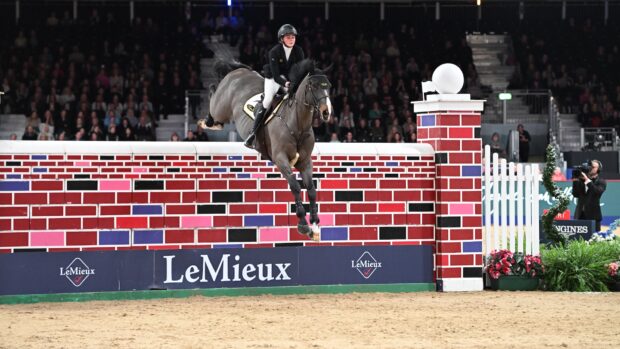A panel of experts including top doctors and engineers has put forward a set of proposals to strengthen current testing standards for equestrian helmets.
The FEI helmet working group, established in April by the FEI’s medical committee, was tasked with reviewing current standards and related scientific literature. Their focus was on how helmets could be even more effective at reducing the risk of serious head injuries.
Their main conclusions centred on improved testing criteria and measures, plus a new and improved injury reporting system.
“While the FEI continues to work on reducing horse and rider falls, measures are needed in parallel to reduce the risk of significant injury when falls do occur,” said FEI medical committee chairman Mark Hart.
“Helmet requirements are very sport-specific. And, as the international federation for equestrian sport, we believe that it is our duty to take the lead on assisting manufacturers with creating helmets that specifically cater to the demands of our sport and better protect our athletes’ heads.”
The working group included Jerry Hill, chief medical adviser to the British Horseracing Authority, former chief medical officer of the Irish Horseracing Regulatory Board Adrian McGoldrick, plus representatives from Mips (Multi-directional Impact Protection System), Charles Owen, and more.
They recommended a better injury reporting system to track head injuries and the effectiveness of changes to testing procedures, and that scientific testing criteria need to be improved through new computer modelling and simulations, which better reflect real-life accidents. They also called for additional testing measures and updated brain energy transmission thresholds to be incorporated into the current testing protocols, with a suggested deadline of around 2027.
FEI president Ingmar De Vos said that the progress represents a “significant leap forward for the entire equestrian industry”.
British Equestrian Trade Association (BETA) chief executive Claire Williams told H&H that it is fitting that these proposals came out at a time when the industry was expecting the harmonisation of the new European standard, which has since happened.
“The work of several years has brought this [new European] standard up in performance, but we know there is more work to be done,” said Ms Williams.
“We intend to start revision on this when the work on rotational impact testing alongside the new headform used for testing is available in 2024.”
Ben Hanna, product engineer at Champion, told H&H the work is a “welcome step forward”.
“Helmet standards are largely developed by governing bodies and associations, so new guidance from academics will act as a crucial steer to marry science with manufacturing,” he said.
“As a family-owned business committed to safety, we support initiatives to improve rider safety and have been innovating our products with the same goals in mind.”
Dr Hanna added that many of the areas are already being discussed in European Committee for Standardization meetings.
“The majority of recommendations are made based on high-energy impacts (worst-case scenario events) and don’t consider lesser energy events, which arguably occur more often,” he said.
“One specific area acknowledged is the importance of rotational energy in relation to concussion, tests for which are in the pipeline to be added to standards.
“We anticipate that these requirements will drive a new wave of innovation and will supersede any standard or helmet created to meet only linear tests.
“The FEI working group will help inform the committee’s work on the test method, and more importantly the limits for helmet performance.
“We would welcome the addition of other manufacturers of both helmets and rotational energy mitigation technologies to the FEI working group, to increase the variety of experience with different solutions. To give voices to more experts.”
You might also be interested in:

Subscribe to Horse & Hound magazine today – and enjoy unlimited website access all year round

Calls for all sports to track horse and rider falls after surprising new figures

Why riders with concussion must stop trying to ‘beat the doctor’
Horse & Hound magazine, out every Thursday, is packed with all the latest news and reports, as well as interviews, specials, nostalgia, vet and training advice. Find how you can enjoy the magazine delivered to your door every week, plus options to upgrade your subscription to access our online service that brings you breaking news and reports as well as other benefits.




